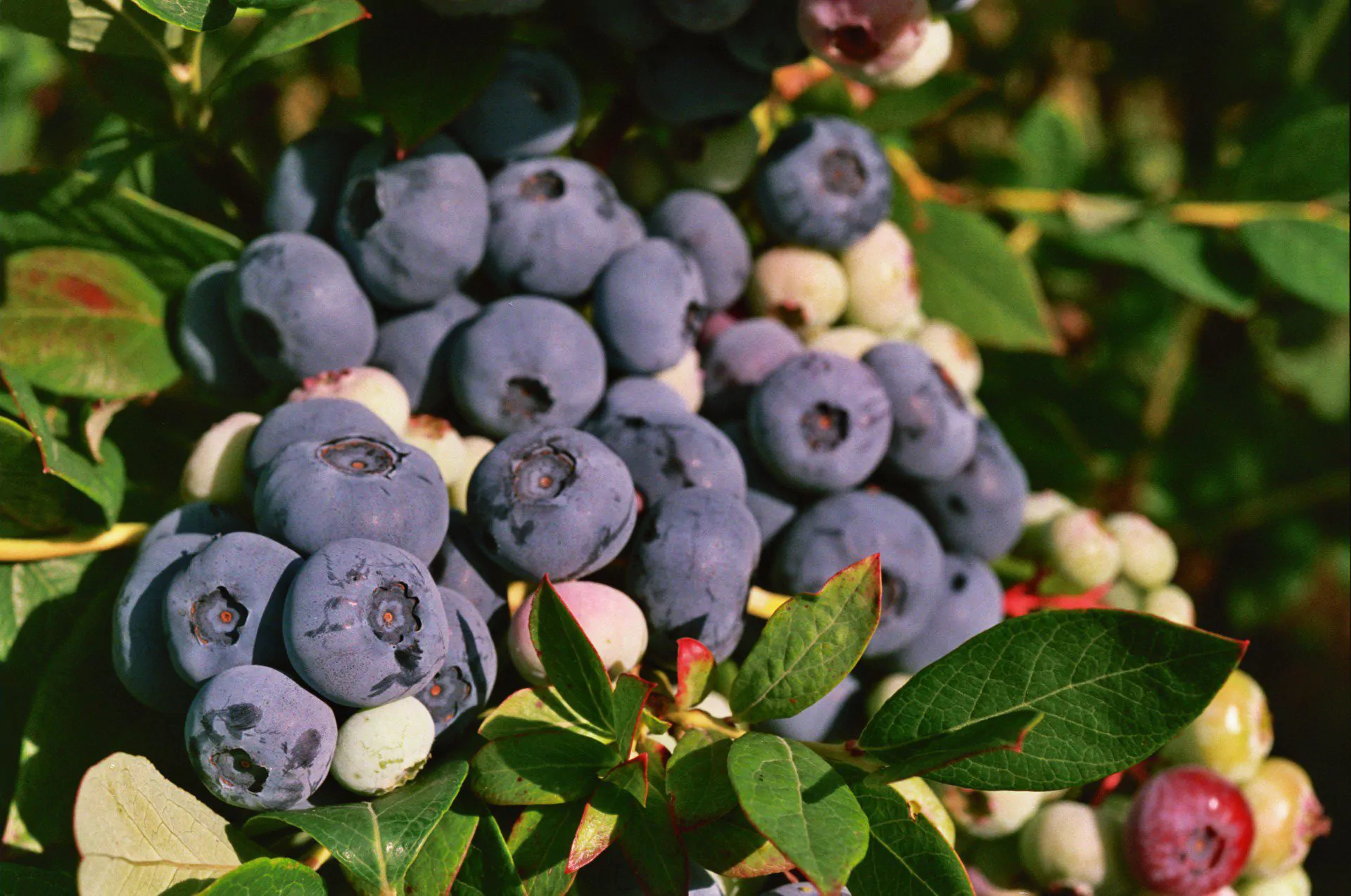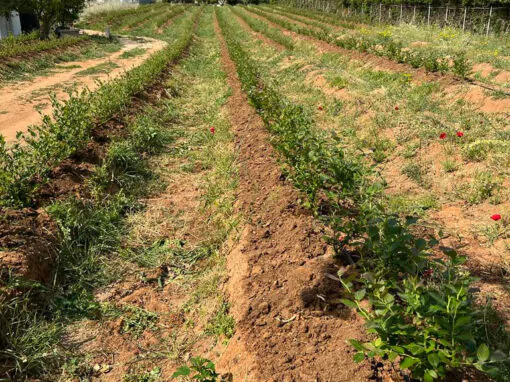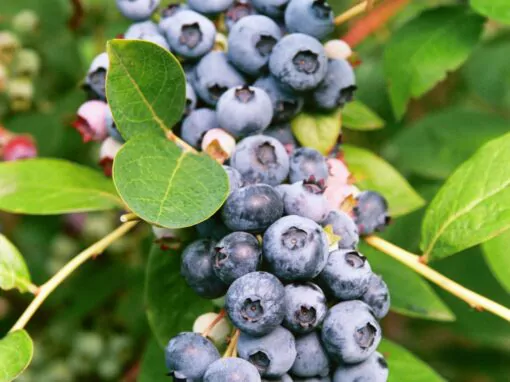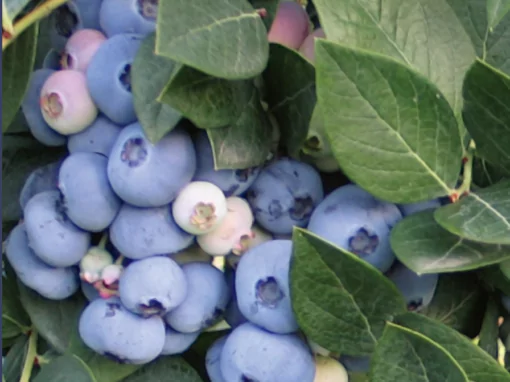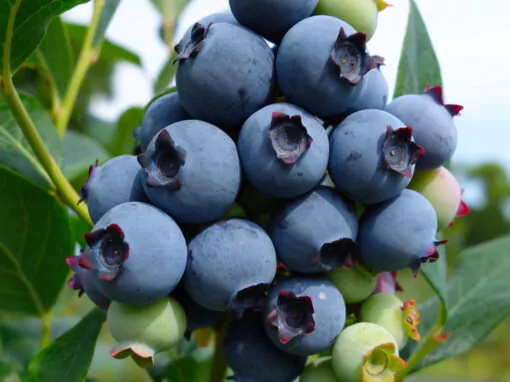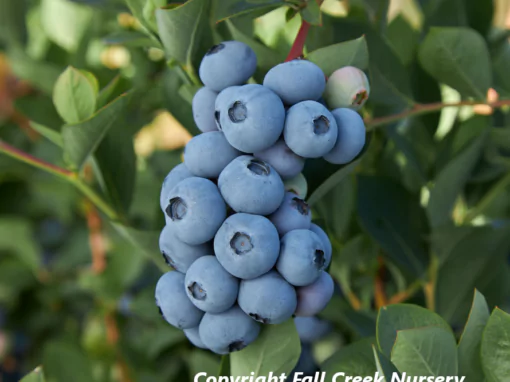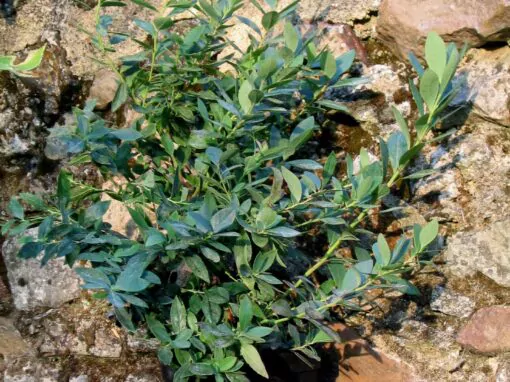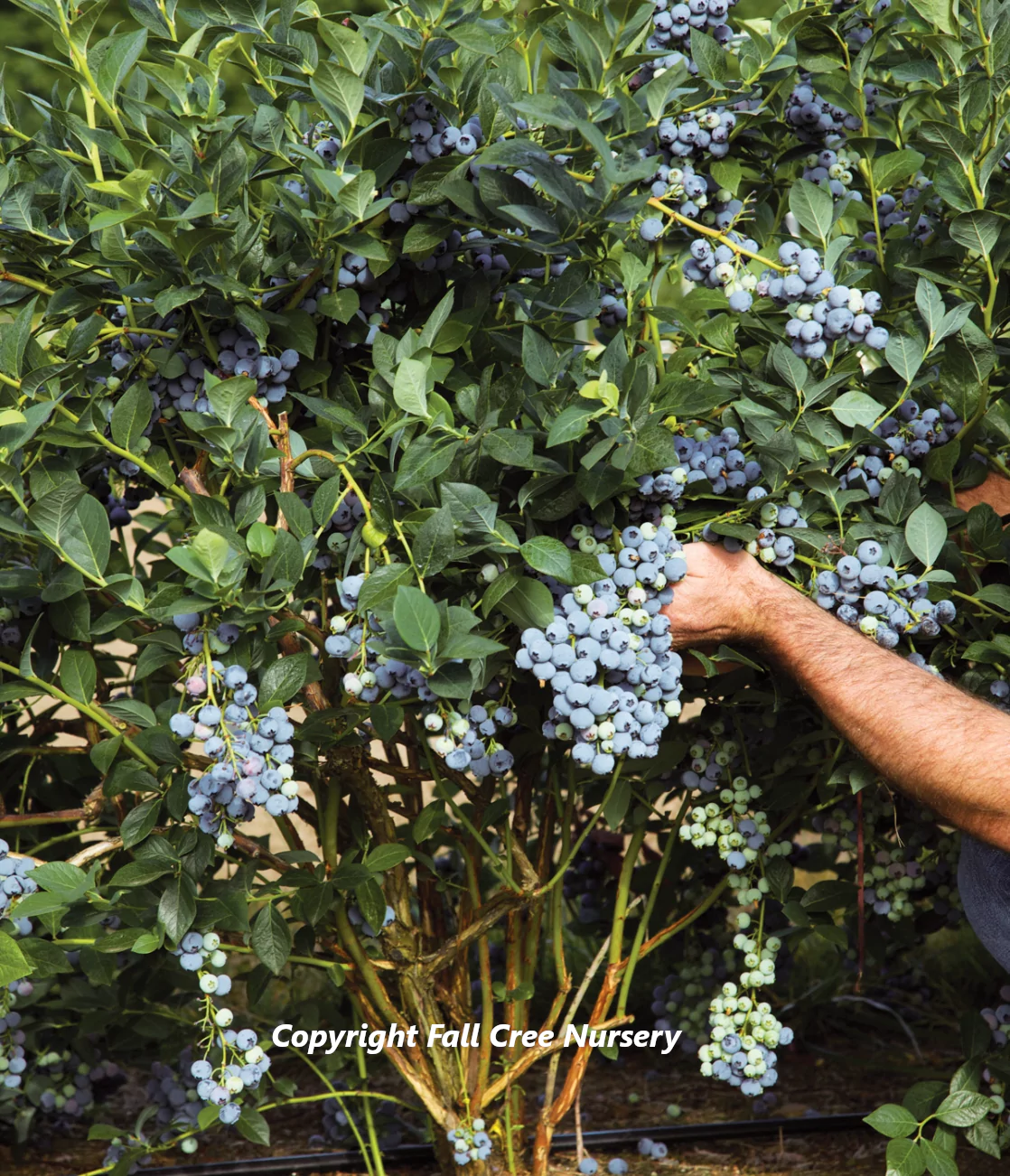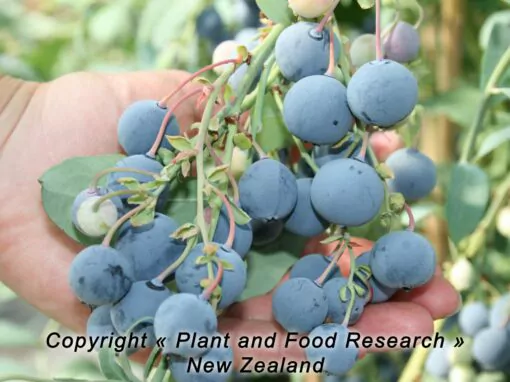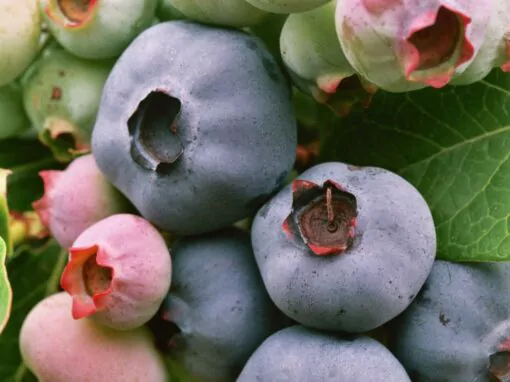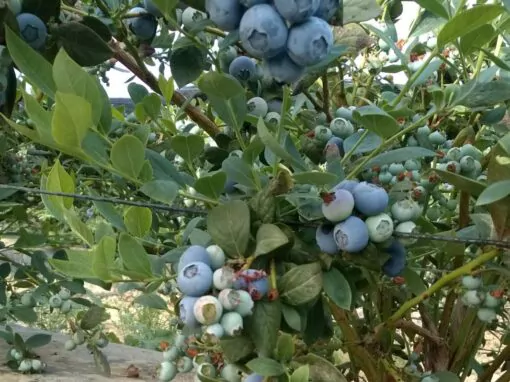Let’s look at our blueberry range !
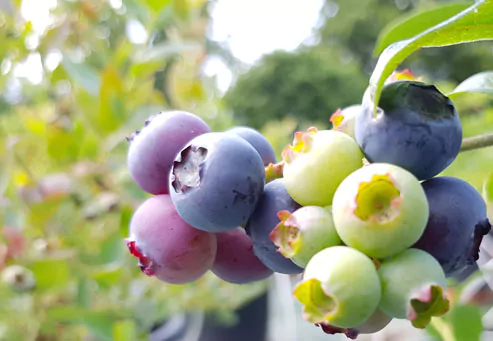
High Chill
The High Chill Blueberry is also called Northern Highbush. It is traditionally a strait Vaccinium corymbosum native to the northern states of the United States and Canada. This species was first selected in the early 20th century by breeding pioneers Elisabeth White and Frederic Coville.
Today, most recent varieties contain some interspecific genes responsible for added firmness and shelf life.
The chilling requirement* of Northern Highbush is over 1000 hours. These varieties generally perform well in oceanic, temperate and continental climates.
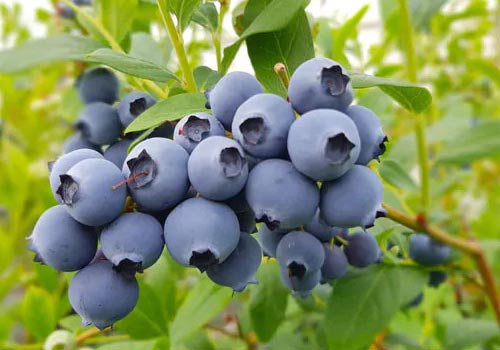
Mid-Chill
The Mid-Chill Highbush Blueberry is an interspecific hybrid with an intermediate chilling requirement*.
Its cold hardiness is usually less than the traditional northern highbush, but other desirable traits such as superior firmness or higher yield potential are usually present.
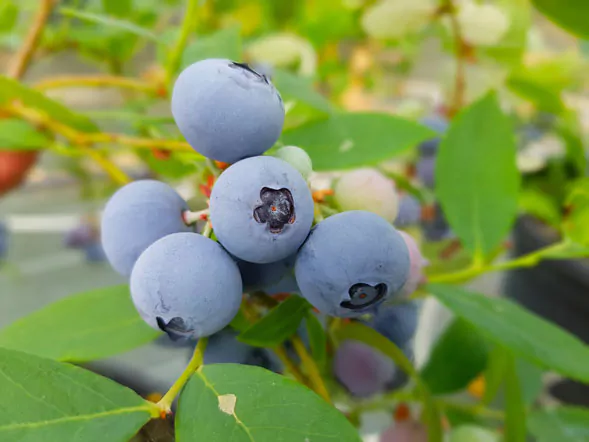
Low Chill
The Low to Zero Chill Blueberry, also known as Southern Highbush, is an interspecific hybrid originally developed by the University of Florida. The main idea was to create a blueberry highbush for growing blueberries at lower latitudes, extending the window of opportunity and availability of fresh blueberries. Over time, breeders found that genes responsible for more firmness and shelf life, or Brix, were associated with the desired low chilling characteristics. Some varieties have no chilling requirement at all* and can be grown in tropical to subtropical regions. Other varieties have some chilling requirements and grow well in a Mediterranean climate. Southern Highbush blueberry bushes are usually pruned back very severely after harvest, so that the yield is carried entirely by annual canes.

Rabbiteye
This cousin (Vaccinium virgatum/ syn: Vaccinium Asheï) of the traditional northern highbush is native from the southern states of the U.S. and has naturally low chilling requirements with limited hardiness. Most Rabbiteye varieties are late ripening and have the economic benefit of off-season (September/October) production in regions where the fruit can ripen sufficiently late without being exposed to severe winter frosts.
*It is expressed in Hours and determinates the amount of cold temperatures necessary for fulfilling the dormancy requirement of one variety. The “vegetative zero” is commonly accepted to be somewhere between 7 and 8°C. The number and consistency of hours below this temperature will determinate the chilling available in one region.)
Our Products
Filter plants
Plant sizes
We sell our plants according to root volume because this is the most relevant criterion for assessing the quality of plants. In contrast, a plant’s age is of little relevance. Plants of equal quality can vary greatly in age depending on the place of production, the method of propagation, and on many other reasons.
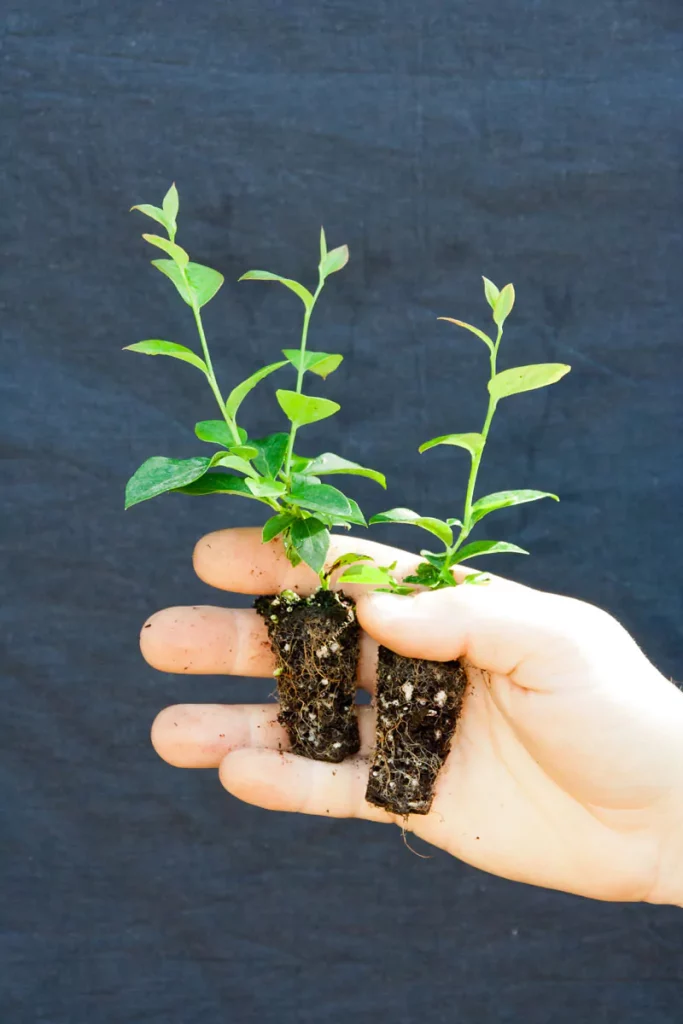
Rooted plugs – 96trays-55cc or 54trays-87cc
For Nurseries
Our vegetal material originates from mother micro plants that produce a large quantity of homogeneous and vigorous micro cuttings. From a cutting re-potted in June, a 1 litre plant can easily be obtained in the same year (in Angers, France).
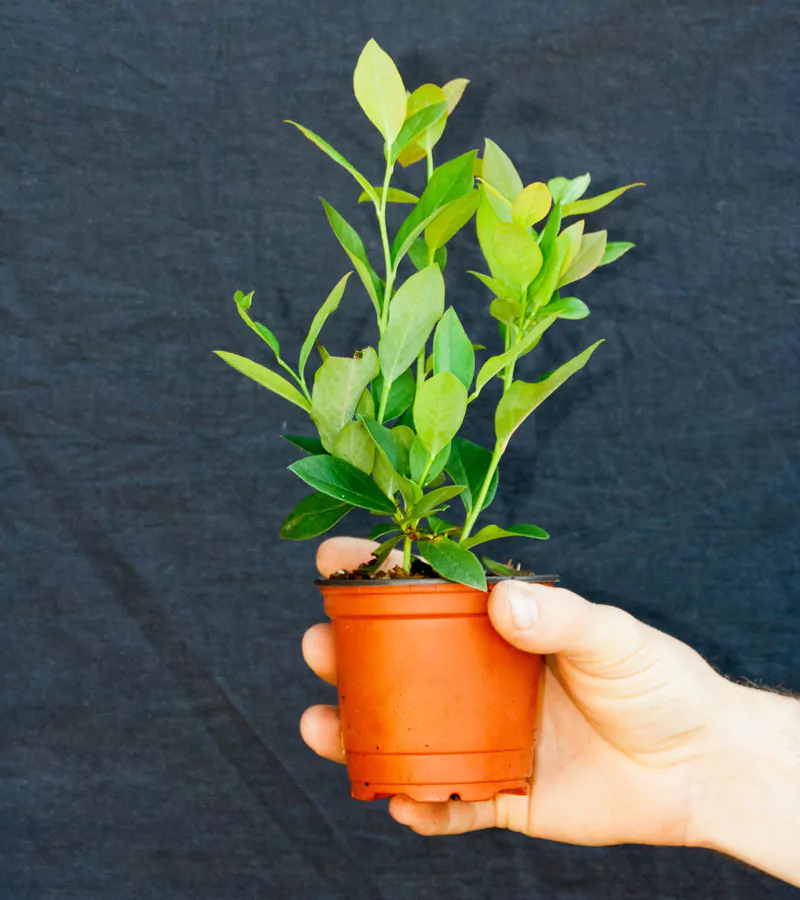
9 cm diam pot
For Fruits Growers
For the Blueberry grower, it is the first Plant size dedicated to direct planting into soil. P9 offers a quick start leading to homogeneous plantings. For the longue distance export, shipping cost remain under control. P9 are particularly interesting in climatic zones where the growing season is extended.
For Nurseries
Destined for nursery gardeners, the P9 can be re-potted in containers of 2 or 3 litres.
For mail-order nurseries, this ready-to-plant product offers an economic solution thanks to its small size and weight.

1 litre pot
For Fruits Growers
Our best-selling format. Particularly suitable for shipping by road. We can load up to 26,000 plants per lorry. Cost of transportation is limited. Can be harvested in the second year after planting. Plants are shipped during their dormancy period.
1 litre plant (11 x 11 x 12 cm)
For Nurseries
Is a finished plant that can be resold directly, or re-potted in a larger container (>4 litres).
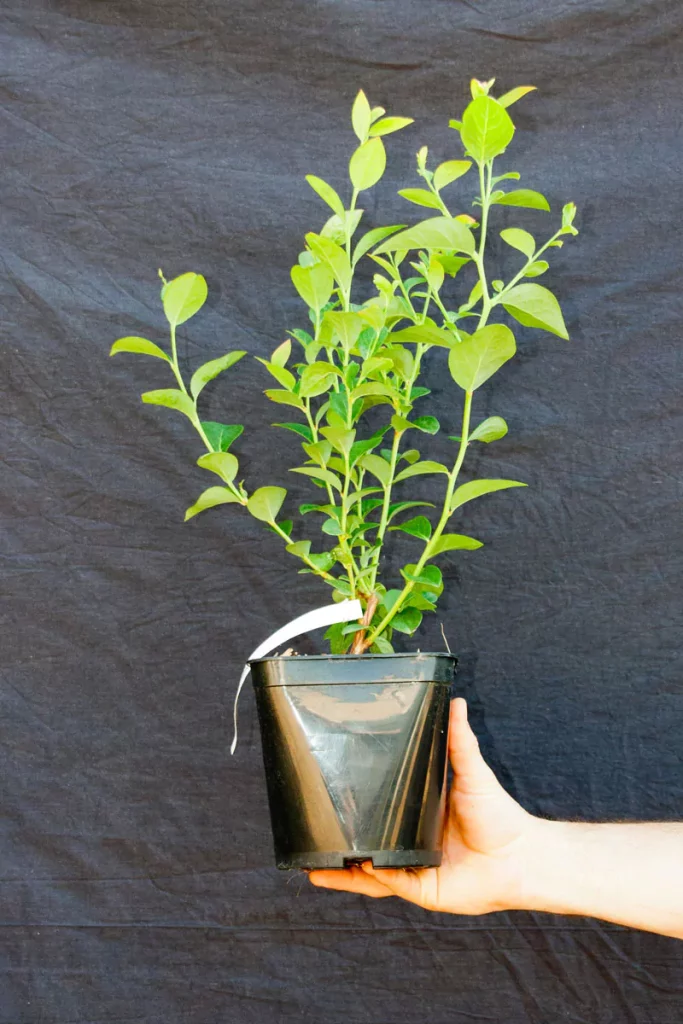
2 liter pot
For Fruits Growers
This format of plant offers a greater root volume. This ensures successful planting and reduces the time to harvest. This is especially true in parts of northern Europe where the vegetative growth period is short.
For Nurseries
Destined essentially for resale and for professionals not wishing to grow plants themselves because of the specific needs of Ericaceae. Ideal for fruit farmers wishing to produce a small-fruit range. Please contact us for custom developments.
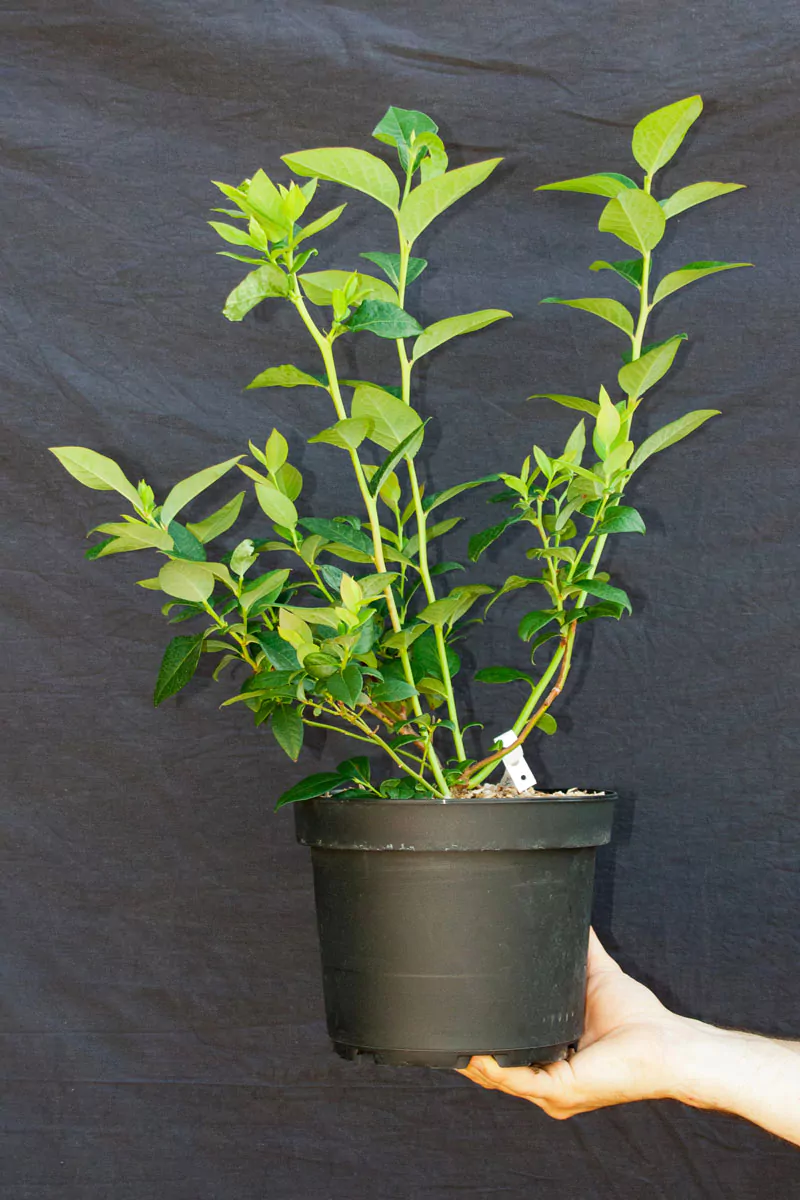
4 liter pot
For Fruits Growers
This format can produce quickly, or under tunnels where overheads are high. We generally stock a more limited quantity of this format, which is why we offer custom production.
For Nurseries
This is a finished plant destined for a premium clientele. Outside of custom orders, our stocks are generally quite limited.
